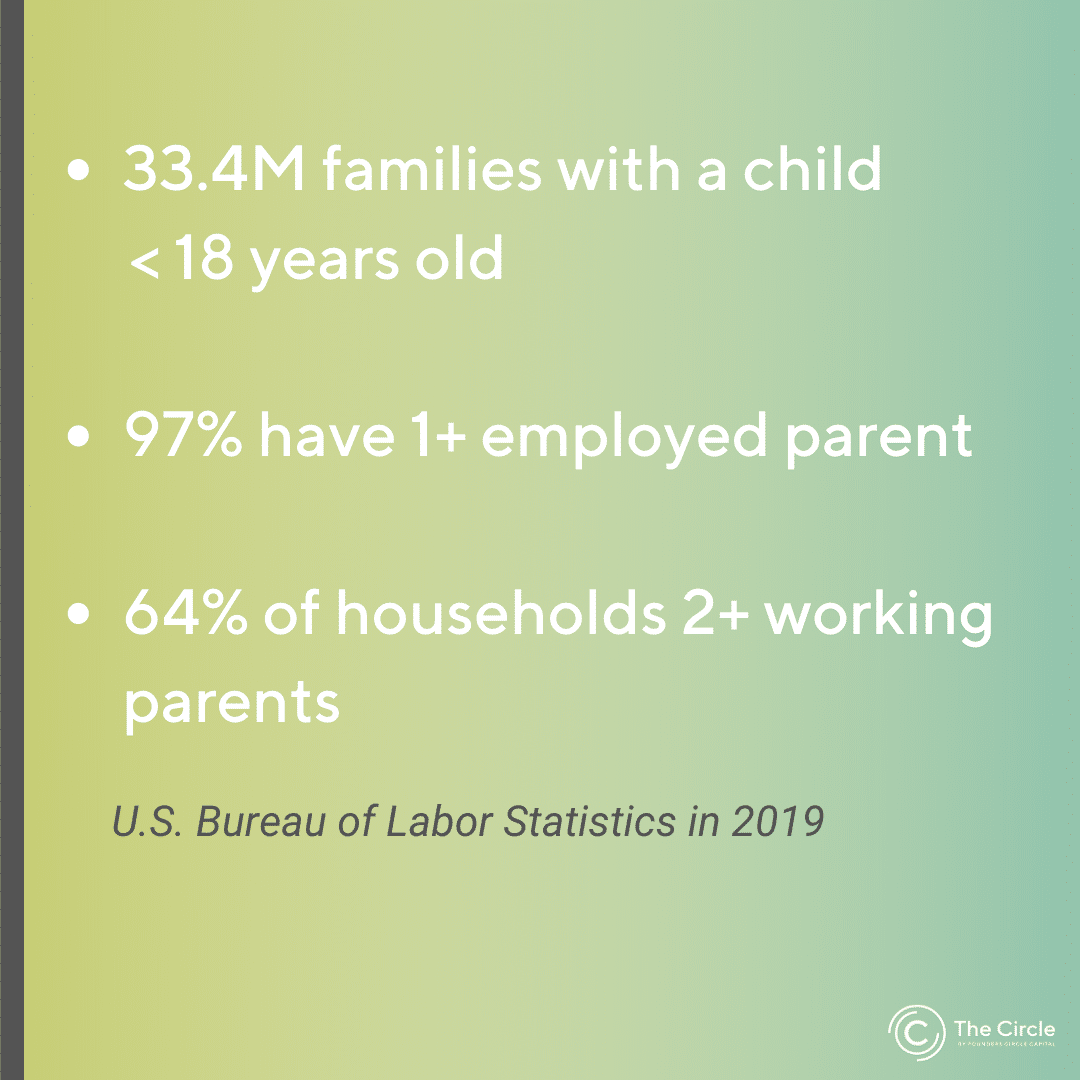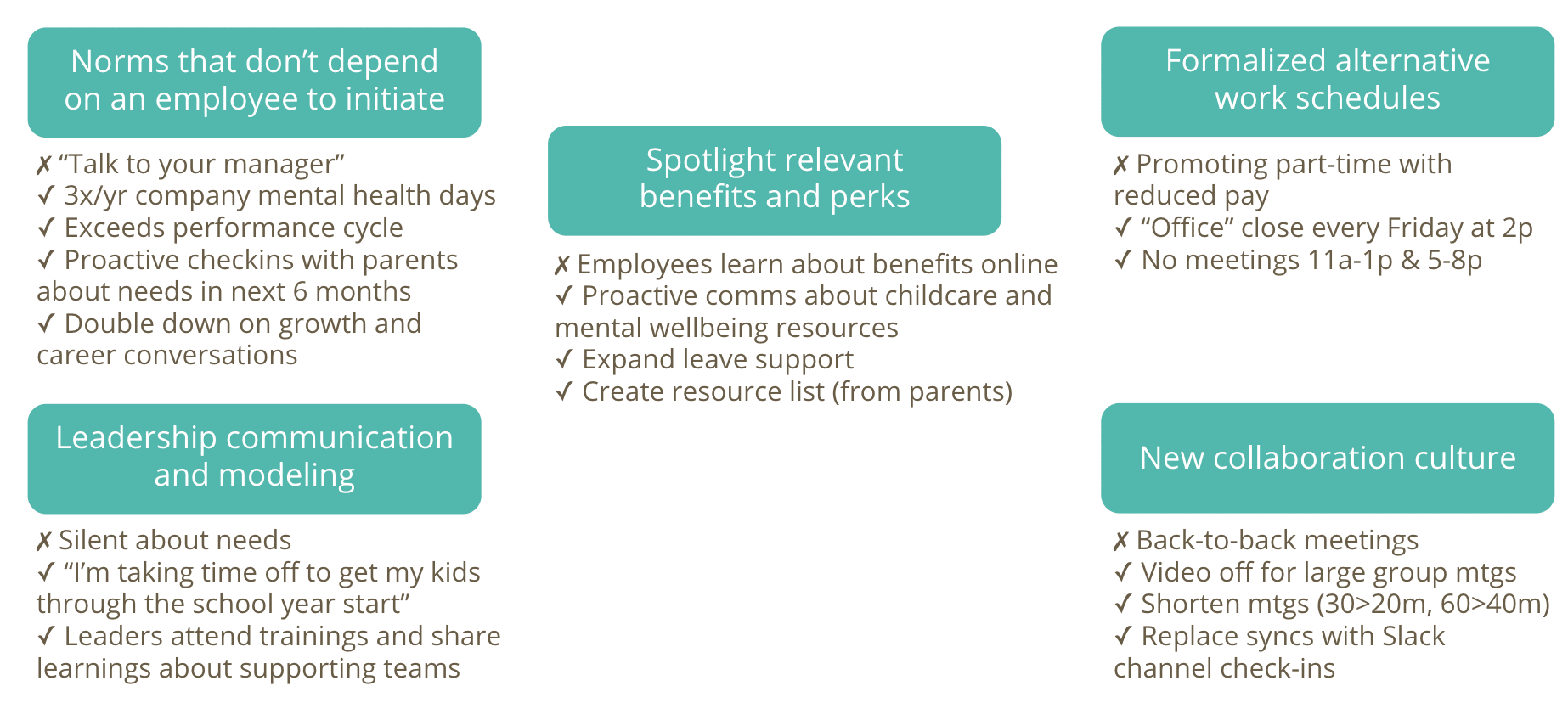Trending
Advancing Your Influence: Strategies for CFOs
/in Featured on Home, Trending, Talent, Developing Your Team, Leadership & Vision, CFO Leadership/by Matt McCueHow People Leaders Can Invest In Their Own Growth
/in Developing Your Team, Leadership & Vision, I Need to Retain my Top Performers, Featured on Home, Trending, Talent/by Matt McCue5 Levers of Leadership: How CHROs Can Foster a Resilient and Efficient Workforce
/in Featured on Home, Trending, Talent, I Need to Retain my Top Performers, Developing Your Team, Leadership & Vision, I'm Looking for Strategic Planning Tips/by Matt McCueShare this entry

Making Work Work for Parents in 2020
If COVID and WFH have taught us anything, it’s that this all is very human. Our full selves, which is normally compartmentalized, is getting entirely exposed (or can’t be prevented from spilling over) to our work selves. Unlike most topics covered in The Circle programming, the member discussions were not focused on the usual operational or leadership dynamic which needs to be sorted out. The questions are more from the realm of “what do we do?”. This is not entirely unexpected since this is an unprecedented issue that companies are contending with. There are few, if any, “best practices” which would be readily available with other operational issues.
That said there are a few within our community that may be “ahead of the curb” sort of speaks. Lisa Singh, Director of Global Benefits for Silicon Valley Bank and Jess Yuen, advisor to people-focused leaders are those amongst them. Lisa is working with 3,900 employees across 32 states and 9 countries of which nearly half of whom (44%) are employees with families. While Jess has run people ops for a number of large venture-backed private companies (Gusto, Couchbase, Sal Khan). Now, she is consigliere to CPOs, CEOs, and other CXOs, in the management and leadership skill set of their people.
We are all in this together!
Along with Lisa’s and Jessica’s insights were insights and initiative from our community, which we will share here. But before jumping in, we asked some of our community members to share some of their personal experiences and challenges.
“I think if I’m trying to multitask, I’m not doing either well. I’m either short with my kids when they need my attention or I am not engaged at work when I need to be paying attention. And I’m really not looking forward to remote learning again as my kids aren’t old enough for totally synchronous learning yet. I am at the point where I’m pretty burnt out on all of it.”
-Anonymous community member + parent of grade-schoolers
“I don’t have to help them out with learning and they actually set their alarms and get up and everything, which is good. But from a social perspective, I’m concerned about that as well. Teen depression is a real thing when you’re not with your friends, they are really looking forward to playing football, which has moved to this spring. And just is education, what is the quality of education going to be? I have no idea.”
-Anonymous community member + parent of teenagers
“That idea of multitasking. It makes me less motivated for work because I’m less engaged at work because I’m at home. And then you also feel like you’re not the right parents because you’re kind of at home, but not really. So this shit is hard and I don’t think it’s going to change anytime soon.”
-Anonymous community member + parent
These were raw and real experiences that left us all vulnerable. The resounding feeling was that if C-executives in growth-stage companies have these concerns, which for some they are not considered the “average” parent that has limited access and fewer resources, then what are the rest feeling like?
What are we dealing with?

On the call, 28% of the attendee’s workforce is compromised by 40% or higher working parents. The remainder was between 20% to 30%. In other words, this is a big population to solve for.
Amongst the list of concerns within this population were physical health, productivity, attrition, impact on culture, mental well being, and social inequality. And now that the duration of this challenge has lengthened, companies are starting to worry more about attrition. Fortune Magazine highlighted a survey by Cleo which learned in April, 6% of parents expected to quit their jobs because of COVID. And as of July, that number is now up to 27% that are anticipating they’re going to need to quit their jobs. Especially in light of the last few months, the social inequality that comes out of this as minorities and women are being disproportionately affected by the challenges here.
One company that was predominantly composed of sales roles are getting more resignations with the announcement of distance learning for the new school year for employees that don’t have childcare solutions. And even more so resignations for mothers than fathers. Even after offering flexible hours and 90-day unpaid leaves that were mostly utilized over the summer. “I’m worried that it’s only going to get worse as more schools announce a delay of in-person openings. We don’t really see any other groups of people leaving. And unfortunately for better or for worse, it is predominantly affecting women because they’re looked to as the primary caretaker.”
How do we wrap our arms around this?
Do Parents really have to make the hard decision between their careers and kids? As companies, we’re now trying to figure out: What do we do? What’s our obligation? How do we wrap our arms around it?
Our VIP’s suggested three things to focus on to have the highest impact support.
The first may seem obvious, which is to start with the purpose. Asking yourself “what are we trying to do or solve?” Are we trying to make sure that our parents are not leaving our companies? Are we trying to figure out mental wellbeing? Are we trying to do a multitude of things? Try to articulate this and make sure you understand what the target is so that the arrows you’re shooting can get you as close as possible to solving them.
The second thing to think about is honing on who. Asking yourself “who are we serving and who are these employees?” And for those of who work with marketing and like personas, or maybe have even been doing this within their people organizations already, consider the key personas. Who are the most common profiles of parents that you’re serving in this?
[Ideas on how to collect these metrics (i.e. identify personas, i.e. age of children): benefits data, dependents data, surveys (Culture Amp, Survey Monkey or Google Forms), & employee/leader feedback]
For example, if you have lots of parents of newborns, they need sleep. And so it might be thinking about resourcing a parent community or thinking about a product like a Cleo or maybe thinking about stipends for sleep training or for helping out with food service or of the like.
Whereas another example, perhaps you have lower-wage employees or perhaps they need to be in stores or on-site. And with school-aged kids, you might be looking at stipends for internet or devices so that their kids can actually access the education that they need or thinking about childcare to supplement so that they have some watching them when their parents aren’t around.
A third persona, maybe workers that it’s less about the money. And it’s more about just the fact that they’re working from home and trying to balance juggling having their kids around at the same time they’re trying to do work and splitting their brains. Perhaps it’s about looking at the norms we have in working together. And so maybe it’s no meetings at lunchtime and dinner time, maybe it’s setting the norm that it’s okay for a video camera to be off if we need to breastfeed or prep a meal or go to the bathroom because we were in back-to-back meetings all day.
Personas are pretty useful to understand because the solutions will vary depending on who you are trying to serve. Categories within each situational persona to consider are: family structure (# of dependents / single/married), social wellness (access to hobbies/outlets), residence type (house vs apartment), home office (set up), financial position (ability to afford extra expenses).
The last thing is to think holistically. This doesn’t mean comprehensive solutions are needed, but just to be understanding if you are solving something as a point in solution? Or is this a set of solutions that you want to put together? Is this short term while COVID is lasting or is this something long and durable that we want to have in perpetuity well beyond this year and next.
What do we do? What’s our obligation?
Stating the obvious, there’s not a one size fits all offering or solution. A simple thought but also a reassuring one was that “we’re not going to get it right, but just taking some action is going to help.” The upside of taking some action is really having more productive and engaged employees and more committed and loyal employees over the long run. And net net decreases expenses. As the downside of doing nothing can result in employees quitting which causes an increase in replacement costs, poor performance, disillusionment with the company, damaged employee relations, increased medical claim costs, and disability leaves.
A suggestion by a VIP was to utilize your current benefits. Start by looking at which benefits already exist that currently support families and promote, enhance, and amplify those. One example was increasing the number of days for existing backup child care programs already being offered. Another was to increase EAP visits. In summary, pull together existing programs, promote and market them so employees know about them, and then consider whether you can enhance them at all.
Next, consider leveraging existing partnerships, both external and internal. Can external vendors do more or have additional offerings? An example is life and disability insurance vendor offering financial coaches. Or bring together external vendors to guide expert related conversations on different topics complemented by your tips and experience by your internal team members. Find a way for internal team members to come together to share ideas, information, and resources for returning to school.
Lastly, discover new vendors or partners. Consider what new services are now available or what vendors are better meeting the needs during COVID-19. A consideration is to redirect funds from expenses that are no longer being spent on due to sheltering in place (facilities, travel expenses, onsite events, and functions/celebrations) to help offset the expense.
A lot of the things that we think about when it comes to parents are expensive, like parental leave and stipends. And those are valuable and important, but it’s just as important to look at the way we work and the norms and expectations. Acknowledge that parents have challenges, especially when the messaging comes from the executive team. Be flexible where you can. Focus on consistent manager training around the flexibility being provided, different benefit options, and normalizing behaviors (i.e. kids on Zoom, breaks.)
Provided by Jess Yuen:
Can these decisions lead to unfairness across the workforce?
Inevitably companies will put into place very thoughtful and constructive programs for working parents. They may even alter the norms in the culture to enable the flexibility that working parent employees need. But, what about those without kids? If considerations and/or accommodations will be made for working parents when measuring performance or paying out commission, will that create bifurcation and unfairness across the workforce? One attendee wondered if it could be as simple as “can we just over reward the people that are going above and beyond, and under reward the people who need accommodations.” Or simulate, if possible, Facebook’s position on this performance cycle, where everybody exceeds expectations because we’re in exceptional times and everybody’s trying their best to do as best as they can in that.
Although a solution to fair compensation and performance has not yet been worked through, consideration is to think of how performance management can be looked at differently, at least in the next year or two, and accommodate these differences and these challenges. “And part of that is looking at your company priorities and your company goals, and maybe it’s not scaling back expectations for parents and increasing expectations for non-parents, but maybe it’s looking at your company goals in general, and maybe having to scale back that a little bit to accommodate where the workforce is right now and what everybody’s dealing with.”
The Summary:
In summary, create personas by looking at family structure, location, financial position. Then figure out employee needs from there and create high-level groups. Next do a deep dive into what those needs might be around ergo, mental health, parental support. Last figure out what resources we currently have, where the gaps are, and what else we can be doing
Regardless of how thoughtful and constructive are the programs that companies put into place, working parents simply will be required to do more. To spend more total time engaging on something of great importance. Every day. Day after day. That will take a toll. How will your company try to help make this new reality more sustainable?
Related Blog Posts

Advancing Your Influence: Strategies for CFOs

How People Leaders Can Invest In Their Own Growth




